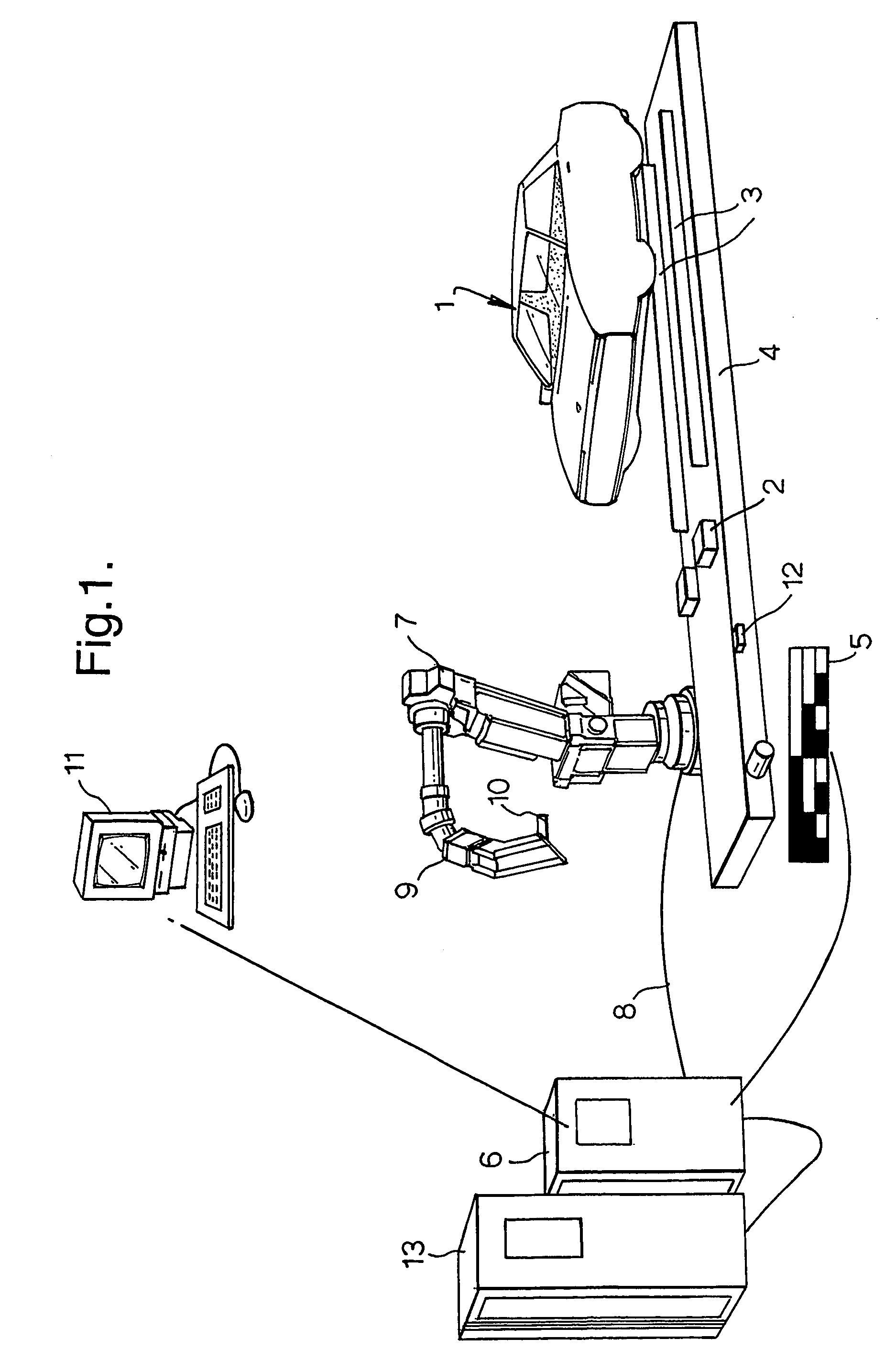Auto Motion: Robot Guidance for Manufacturing
a technology of robot guidance and manufacturing, applied in the field of robot automation, can solve the problems of robots not being able to match the hand-eye coordination of people and their ability, unable to meet the needs of mass production automobile companies, and unable to meet the operation of moving conveyors, etc., to achieve the effect of reducing production costs, reducing production efficiency, and reducing production efficiency
- Summary
- Abstract
- Description
- Claims
- Application Information
AI Technical Summary
Benefits of technology
Problems solved by technology
Method used
Image
Examples
examples
1. Robot Glazing (Pictures in FIG. 2)
[0067] The glazing cell illustrated is a prime candidate for application of the principle of ‘on-the-fly’ component insertion in accordance with the invention. The cell illustrated is designed to use a dynamic glazing principle where the car body travels on its original skid and conveyor system through the glazing cell without stopping. The robot responsible for decking the front windscreen has to follow the moving car body through the cell as shown in FIG. 2(a). The process described here is similar to ‘on the fly’ above but with a focus on windscreen glass. In this embodiment, the robot effector includes a vacuum suction pad to hold the windscreen without damaging the latter.
[0068] The tracking function for the robot is achieved by connecting a digital encoder to the conveyor drive to measure the conveyor position at any time. This robot interprets the signal and uses it to synchronise itself with the conveyor. This synchronising routine is ...
PUM
 Login to View More
Login to View More Abstract
Description
Claims
Application Information
 Login to View More
Login to View More - R&D
- Intellectual Property
- Life Sciences
- Materials
- Tech Scout
- Unparalleled Data Quality
- Higher Quality Content
- 60% Fewer Hallucinations
Browse by: Latest US Patents, China's latest patents, Technical Efficacy Thesaurus, Application Domain, Technology Topic, Popular Technical Reports.
© 2025 PatSnap. All rights reserved.Legal|Privacy policy|Modern Slavery Act Transparency Statement|Sitemap|About US| Contact US: help@patsnap.com



